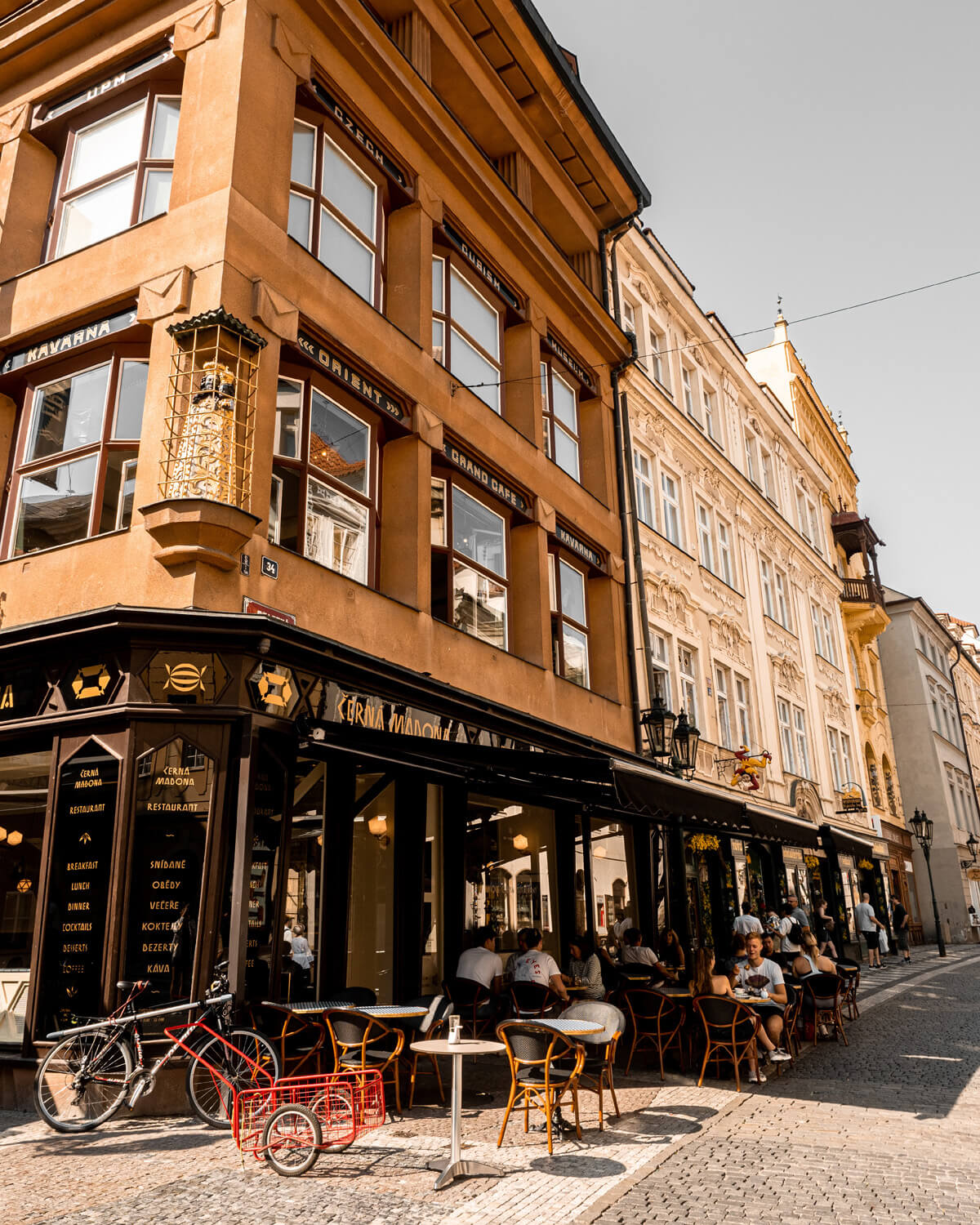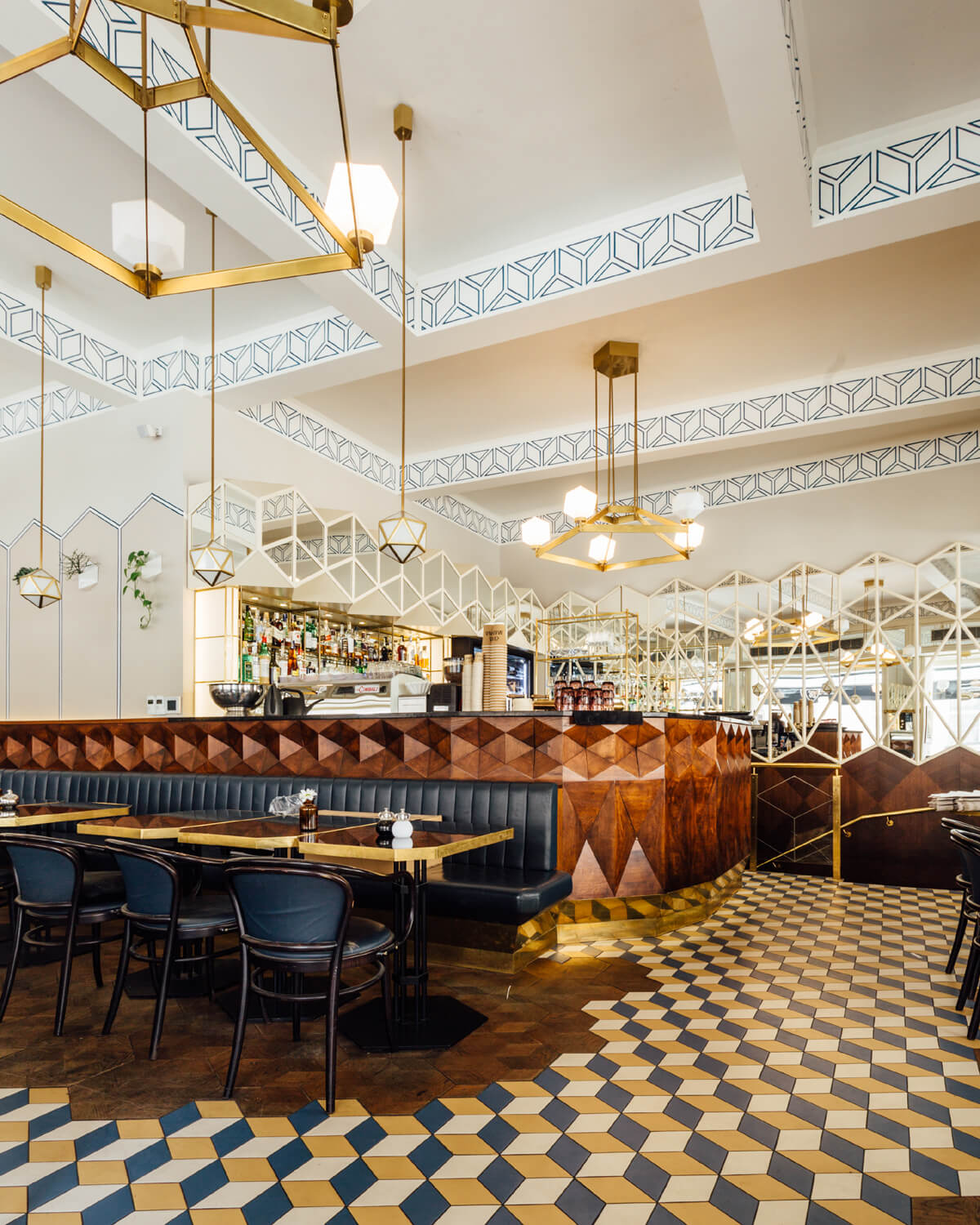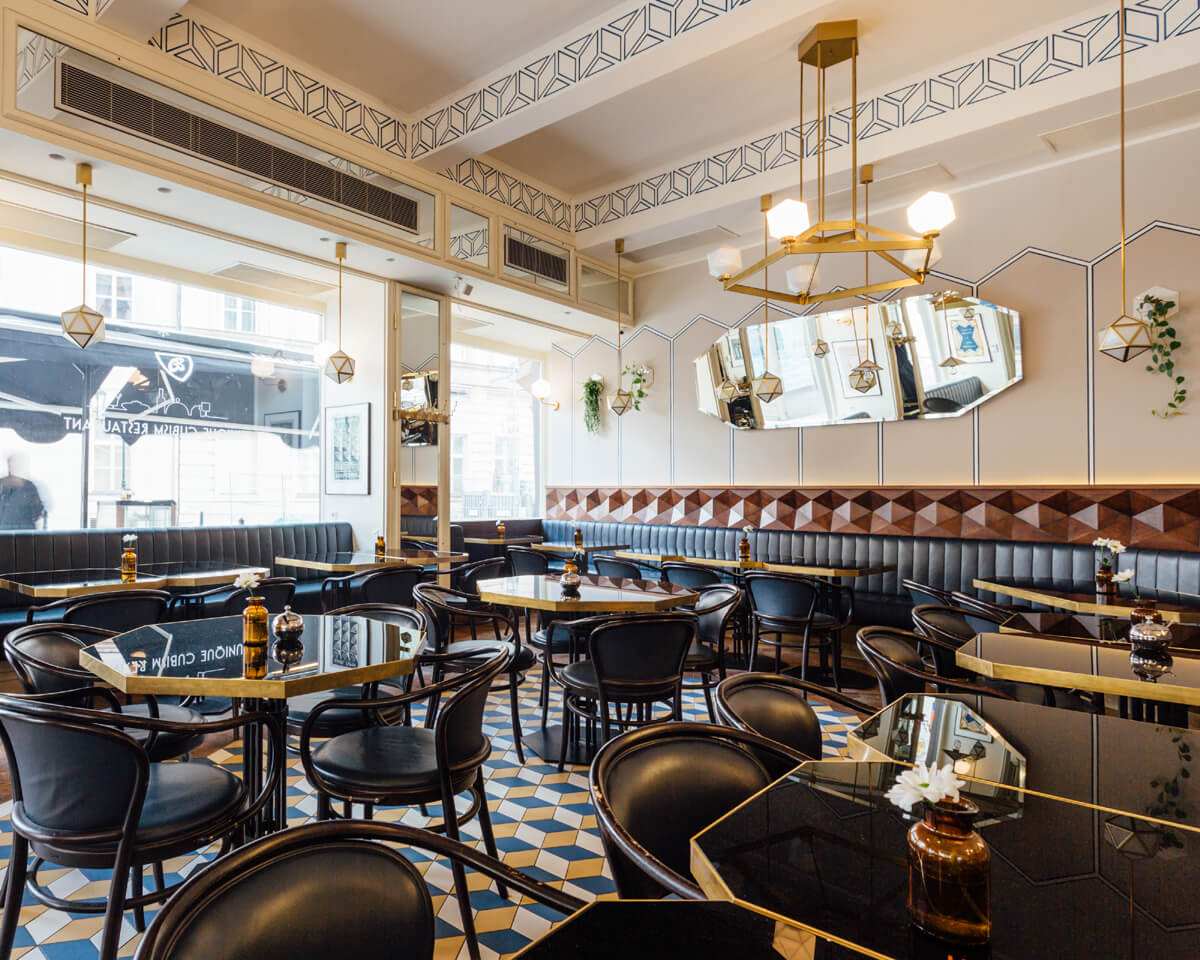Dům U Černé Matky Boží (The House of the Black Mother)
The House of the Black Mother (U Černé Matky Boží), sometimes referred to as Black Mother of the Lord, was designed and built between 1911 and 1912 on the corner of Celetná Street and Ovocný trh. Josef Gočár built the house as the first example of cubist architecture in Prague, and it remains probably the most celebrated. Even without historical details of the baroque building surrounding it, the House of the Black Madonna maintains the atmosphere of the neighborhood. The house was given its name by the stone sculpture that originally adorned one of the two Baroque buildings on the same lot. After many years altered use in the interwar period and under communist rule, the house was closed in January 2002 and re-opened after extensive restoration in November 2003.
Gočár designed the house in mid-1911 at the age of 31 for the wholesale merchant František Josef Herbst. Herbst chose Gočár to build his department store in the Old Town along the old coronation route because of the architect’s earlier success with a similar shop in Jaroměř, built in 1909-1911. Because of its prominent location in the heart of the city, Gočár’s building was subject to strict harmonization rules requiring that the department store not conflict with its historical setting. The building thus uses the language of baroque architecture in a Cubist form, thus exemplifying the ‘contextualization’ of Cubist architecture.



Gočár’s first plans were not well received by the historical buildings authority in Bohemia. Subsequent designs incorporated more Cubist features into the building. The Prague City Council eventually approved the plans on August 4, 1911. Gočár’s early modernist orientation (as can be seen in the original plans for the building), gave way to new Cubist designs in the finished building. The angular bay windows, iconic capitals between windows, and cubist balcony railing took their place in the designs.
Like many of Gočár’s houses, the House of the Black Madonna was built with a reinforced-concrete skeleton inspired by the Chicago School (architecture). Cubist interiors have proven a challenge to architects. The use of a reinforced-concrete skeleton allowed for large interior spaces without ceiling support that were better suited to Cubist aesthetics.
Cubism is an early-20th-century avant-garde art movement that revolutionized European painting and sculpture, and inspired related movements in music, literature and architecture. Cubism has been considered the most influential art movement of the 20th century.
